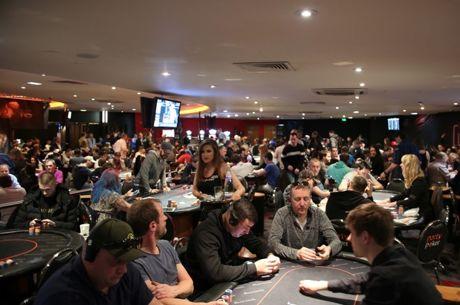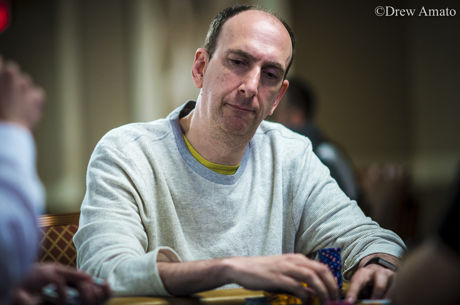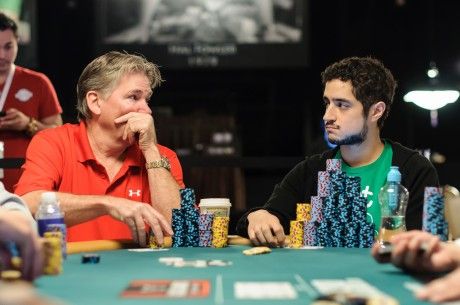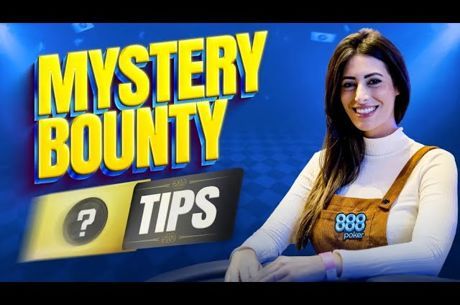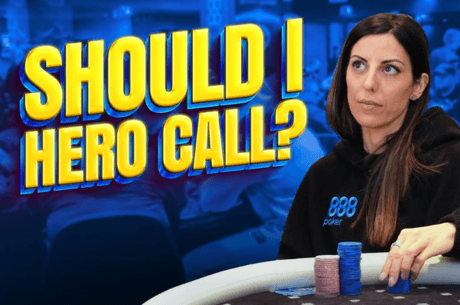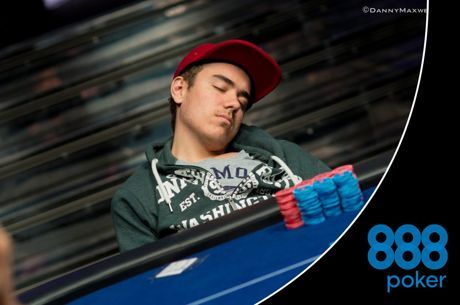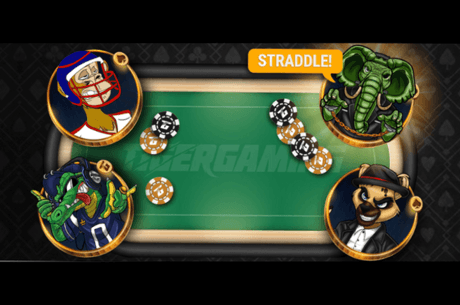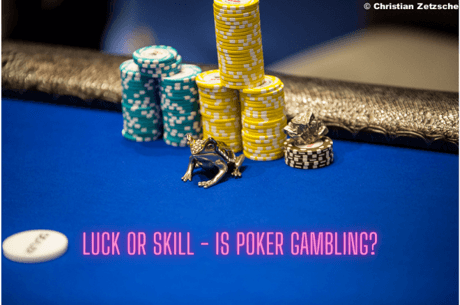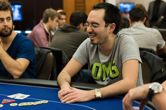World Series of Poker Tells: Knowing When to Fold 'Em
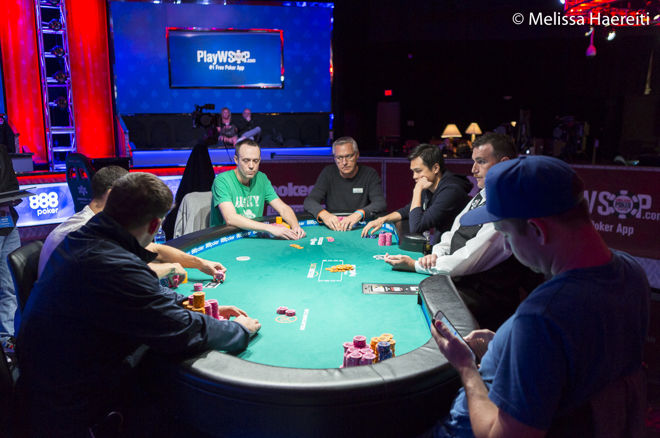
It's World Series of Poker time, so in this article we'll look at five hands from past WSOPs where postflop bettors gave off some pretty reliable indicators of having strong hands.
When it comes to players making significant postflop bets, most reliable reads you'll get will be those indicating a strong hand. It's pretty uncommon to get a confident read that a player making a big bet is bluffing.
This makes a lot of sense when you consider the following:
- Players making big bets will be generally stoic and hard-to-read. That's just how most players strive to act in such spots. Because of this, it's generally hard to distinguish the stoicism of a bluffer from the standard, normal stoicism. You could say that most anxious behavior from bluffers is "camouflaged."
- Relaxed players, though, sometimes do unusual things, either out of trying to be tricky or because they're just so relaxed and enjoying themselves. And these out-of-the-ordinary things can give away that they're relaxed.
Keep in mind the behaviors examined in the hands below are mainly meaningful in the context of decent-sized postflop bets. Such actions can have very different meanings, or no meaning at all, in other situations.
Chip-flipping and uncertain, thoughtful behavior
This is a hand from the heads-up finale of the 2011 WSOP Main Event. In the clip, you'll see Martin Staszko raising the turn. He had A♣9♣ for a full house. There are a couple of interesting behaviors here that are likely to indicate strength:
- the hesitating, uncertain behavior before his raise
- the flipping of his chip before his raise
Watching live, with no hole cards, when I saw these behaviors I was very confident Staszko had a strong hand. Let's look a little more closely at both of them.
Bet hesitation/uncertainty
After Pius Heinz bets the turn, Staszko waits 25 seconds, then starts gathering chips. He pulls over enough for a call, so it looks like he's preparing to call. Then he pauses, looking back at Heinz several times, as if thinking. Then he starts to gather chips again, pulling over more chips from his off-to-the-side stacks. He finally raises.
Bluffers like to convey confidence and certainty. For this reason, they're unlikely to have excessive pauses, hesitations, or uncertain-seeming behaviors in their betting or raising. In this case, if Staszko were bluffing, he wouldn't want to make Heinz potentially suspicious by looking like he was going to call and then changed his mind. Staszko's behavior here makes it likely he's relaxed, mainly because this would be unusual behavior from a bluffer.
Chip flipping
Flipping a chip end over end is loose and playful behavior. When associated with a bet, it's a generally reliable sign of relaxation, much more so than the more common chip riffling. In this match, Staszko had been very stoic. Because he was generally so behaviorally restrained, his chip flipping here, followed by a raise, made it likely this was a subtle but reliable leak of relaxation with a strong hand.
Heinz ended up floating this turn raise with 7♣6♠ — just seven-high, no draw.
Weak-hand statement, eye-contact, genuine smiling
This is a hand from the 2008 WSOP Main Event. There are three meaningful behaviors here from Gaetano Buda likely to indicate strength:
- saying he doesn't have 10x9x (the high straight)
- making a good amount of eye contact with opponent
- a genuine smile
Again, let's look at these behaviors:
A weak-hand statement
Bluffers do not like to weaken their range. When Buda removes a strong hand (10x9x) from his range, it makes it very likely he is relaxed, with a strong hand. (For more on weak-hand statements, see this article examining William Kassouf's verbal tells in the 2016 WSOP Main Event.)
Eye-contact
While bettor eye-contact tells can vary a good amount, most amateur players will make more eye contact when betting strong hands and less eye contact when bluffing. Loose, back-and-forth eye contact (as Buda shows here) makes it even more likely that a player is relaxed.
Genuine smile
Smiles are subjective and can be hard to read, especially small or tight smiles. But if you perceive a bettor's smile as deep or genuine, it can make a strong hand a lot more likely. Here, Buda's smile seems quite relaxed and loose, and not at all pasted on, tight or uncomfortable.
Antonius folded to this bet.
Standing up after a bet
This hand comes from the 2007 WSOP Main Event. There are actually two interesting behaviors from Philip Hilm in this clip:
- standing up after betting
- an uncertain, nervous demeanor
Standing up after a shove
In a study I did of post-bet standing up in the WSOP, almost all cases of postflop standing after betting happened with a strong hand. It's an indicator of relaxation. In addition to standing, Hilm walked around. Walking is even more an indicator of relaxation than standing is.
Uncertain-seeming behavior
Hilm acted nervous after his shove. When Scotty Nguyen told him to stop counting his chips, Hilm awkwardly pulled away and continued fidgeting. The announcers noticed this demeanor of Hilm's. "Hilm actually acting as if he's uneasy," comments Norman Chad, who then adds "Hilm continuing with his little act, as if 'Whew, I'm sweating this out.'" If Hilm were bluffing, he would likely want to convey normalcy and confidence. Above all, bluffers want to be seen as normal; they don't want to be seen as potentially nervous.
Nguyen folded to this shove.
Exuberant behavior and loose smiles
During the 2006 WSOP Main Event, Jamie Gold was very talkative and tricky. Many people focused on Gold's table talk, trying to figure out if he was lying or telling the truth about his hands.
But the much more important aspects of his behavior were these:
- How exuberant and playful did he seem?
- How talkative was he?
- How genuine-seeming was his smile?
In the first hand in the clip above, you can see Gold being very exuberant, playful and smiley when betting the set. Then in the second hand when bluffing, he's much more terse, subdued and even agitated-seeming. This was a common pattern for Gold. Even though he was capable of talking, and talking in tricky ways, in many spots the quality of his talking and his overall demeanor were often quite imbalanced in this way.
For a more in-depth examination of Gold's behavior, see this YouTube video of mine.
Double-checking hole cards before a bet
The clips above are from the 2015 WSOP Main Event. The interesting behavior here is Pierre Neuville double-checking his hole cards right before betting.
Double-checking cards can theoretically be interpreted as genuine uncertainty about one's hole cards. For someone with a strong hand, one might think on a superficial level the player wouldn't need to recheck the hole cards. Meanwhile a bluffer has a general instinctual understanding that this could be one interpretation and so is unlikely to double-check hole cards right before bluffing. A bluffer doesn't want to convey accidentally any uncertainty about what he or she has. This means that most double-checking of hole cards before a large postflop bet is done by players betting strong hands.
A couple notes about this behavior:
- As with all poker tells, the situation matters. We are talking here about double-checking hole cards right before a significant postflop bet. Double-checking hole cards in other situations may have other meanings or no meaning.
- As with a lot of strong-hand tells, this behavior doesn't necessarily have to indicate a super-strong hand to fit the pattern. Many strong-hand tells just make bluffs less likely. As in the second hand in the clip above, Neuville had top pair, which was far from the nuts. The main point here is that he'd be unlikely to double-check here if he was betting complete air.
Zachary Elwood has a new book, Exploiting Poker Tells, available in ebook format on his site and in paperback on Amazon. He also has a poker tells video series.

